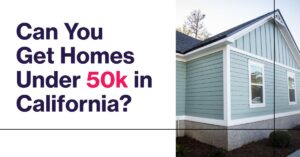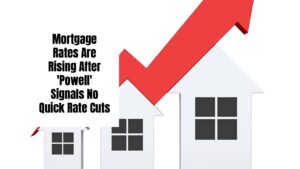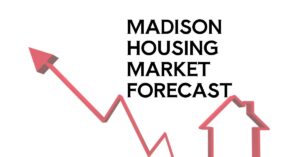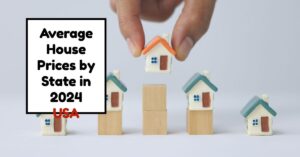Should you consider investing in Seattle real estate? Well, to answer that question we should take a look at its economy and jobs. Many real estate investors have asked themselves if buying a property in Seattle is a good investment. You need to drill deeper into local trends if you want to know what the market holds for this year.
Seattle is a fairly walkable city in King County of Washington. It has a mixture of owner-occupied and renter-occupied housing. According to Neighborhoodscout.com, a real estate data provider, three and four-bedroom large apartment complexes are the most common housing units in Seattle's real estate market.
Other types of housing that are prevalent in the market include single-family detached homes, duplexes, rowhouses, and homes converted to apartments. Single-family homes account for about 40% of housing units in Seattle.
Seattle Real Estate Market Overview
The Seattle housing market has been experiencing a cooling trend in recent months, although it remains a seller's market. Home prices, while still high, have started to show a slight decline. Additionally, inventory levels are rising, although they are still below pre-pandemic levels.
Key Trends in the Seattle Housing Market:
- Median Sale Price: The median sale price of a home in Seattle in October 2024 was $879K, up 8.0% from a year ago (Redfin).
- Days on Market: Homes in Seattle are selling in an average of 14 days, the same as a year ago.
- Sale-to-List Price Ratio: The sale-to-list price ratio in Seattle is 100.4%, indicating that homes are selling for close to the asking price.
For buyers, the Seattle housing market is becoming increasingly competitive. Homes are still selling rapidly, and there's a persistent inventory shortage. However, buyers might have slightly more negotiating power compared to a year ago.
For sellers, the Seattle housing market remains favorable. Nevertheless, sellers may need to exercise patience and flexibility to achieve a quick sale.
Market Forecast: The Seattle housing market is expected to continue its cooling trend in the next twelve months. However, home prices are anticipated to rise overall in the next year.
Also Read: Seattle Housing Market Trends & Forecast
Is Seattle Good for Real Estate Investment?
Seattle, a bustling metropolitan area, presents a promising landscape for real estate investment. However, prospective investors must conduct thorough research and comprehend the challenges and risks intrinsic to this market.
Seattle stands as a major economic hub, boasting a robust economy and a burgeoning population. The city hosts renowned corporate giants like Amazon, Microsoft, and Boeing, alongside a flourishing tech sector and a vibrant cultural milieu.
The real estate market in Seattle witnessed a surge in recent years, with home prices steadily escalating. Nevertheless, in 2023, the market experienced a cooling trend attributed to mounting mortgage rates and inflation.
Despite this recent moderation, Seattle continues to attract individuals seeking an ideal place to reside and work. Consequently, there remains a considerable demand for housing, spanning both rentals and owner-occupied properties.
Benefits of Investing in Seattle Real Estate:
- Strong Economy: Seattle boasts a diverse economy with numerous major employers, driving a high demand for both labor and housing. The Seattle-Tacoma-Bellevue metropolitan area ranked 11th in the United States for gross domestic product (GDP) in 2022. The area's GDP was $462.25 billion in 2022, up from the previous year, and its GDP per capita was $128,316, the third-highest among large metropolitan areas in the country.
- Growing Population: The city's population is on a steady rise, fueling the demand for housing. Seattle's population increased by 2.4% from 2021 to 2022, the fastest rate of growth among the 50 largest U.S. cities.
- Limited Supply: Geographical constraints in Seattle limit land availability for development, ensuring a restricted housing supply and thereby supporting home prices.
- High Rental Yields: Seattle's high cost of living translates to elevated rental rates, potentially resulting in attractive rental yields for investors.
Challenges and Risks:
- High Home Prices: The median home price in Seattle surpasses $800,000, posing a barrier to entry for some potential investors.
- Competitive Market: Seattle's real estate market is fiercely competitive, making it challenging to discover lucrative deals and to attract and retain tenants.
- Rising Mortgage Rates: Recent months have seen a surge in mortgage rates, potentially amplifying the cost of financing real estate investments.
- Economic Uncertainty: The global economy grapples with various challenges such as the Ukraine conflict and high inflation, adding an element of uncertainty that could impact the Seattle real estate market in the future.
Overall, Seattle provides a promising platform for real estate investment, contingent upon a comprehensive understanding of the associated challenges and risks.
Tips for Investing in Seattle Real Estate:
- Collaborate with a Qualified Real Estate Agent: Engage a proficient real estate agent to secure advantageous property deals and navigate the intricate buying process.
- Target Desirable Neighborhoods: Focus your property search on Seattle's coveted neighborhoods, witnessing high demand for housing, to optimize your investment prospects.
- Consider Fixer-Uppers: Fixer-upper properties can present enticing investment opportunities. However, ensure a thorough assessment of repair and renovation costs.
- Be Prepared for Competition: Given Seattle's competitive real estate landscape, swift action is key when identifying a property of interest.
Best Counties in the Seattle Area to Invest in Real Estate
The prime counties for real estate investment in the Seattle area encompass King County, Snohomish County, Pierce County, and Kitsap County. These counties exhibit robust economies, burgeoning populations, and limited land available for development, rendering them highly desirable locations to live and work, thereby driving substantial housing demand.
King County:
King County, the most populous county in the Seattle area, houses the city of Seattle and major suburbs like Bellevue, Redmond, and Kirkland. The county boasts a diversified economy, anchored by major employers such as Amazon, Microsoft, and Boeing. Moreover, it thrives in the tech industry and enjoys a rich cultural scene.
Snohomish County:
Snohomish County, located to the north of King County, hosts cities like Everett, Marysville, and Lynnwood. It features a burgeoning economy and is home to significant employers such as Boeing, Costco, and Walmart. The county also offers ample tech industry presence and abundant outdoor recreational opportunities.
Pierce County:
Pierce County, situated to the south of King County, encompasses the city of Tacoma. It boasts a diverse economy, anchored by major employers like Boeing, Weyerhaeuser, and the US military. Additionally, the county provides various outdoor recreational prospects, including Mount Rainier National Park.
Kitsap County:
Kitsap County, situated across the Puget Sound from King County, is home to cities like Bremerton and Port Orchard. The county is witnessing a growing economy and houses significant employers such as the US Navy and the Puget Sound Naval Shipyard. It also offers diverse outdoor recreational opportunities, including the Olympic National Park.
When pinpointing a specific area for real estate investment, critical considerations encompass the property type, budget constraints, and desired lifestyle. Additionally, meticulous research into the local economy, job market, and educational institutions is essential.
Recommended Read:
- Seattle Housing Market Predictions for Next 5 Years
- Seattle's Housing Market: $178K Income Needed for a Starter Home
- Seattle Housing Market: Trends and Forecast 2024-2025
- Seattle Housing Market Forecast 2025: What to Expect
- The Hottest Housing Markets in Seattle Area (2024)
- Seattle Housing Market: Prices Sizzle, Ranking Among Nation's Hottest
- Seattle Housing Market Heats Up: Prices Soar, Inventory Shrinks
- Washington State Housing Market: Trends and Forecast 2024-2025











